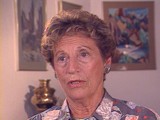You searched for: %E5%85%83%E5%AE%87%E5%AE%99%E9%A1%B9%E7%9B%AE%E6%90%AD%E5%BB%BA%E3%80%90TG%EF%BF%BD%EF%BF%BD%EF%BF%BD%EF%BF%BD%EF%BF%BD%EF%BF%BD%EF%BF%BD%EF%BF%BD%EF%BF%BD%40EK7676%E3%80%91%E5%B9%B3%E5%8F%B0%E5%8C%85%E7%BD%91%E6%90%AD%E5%BB%BA%E5%85%83%E5%AE%87%E5%AE%99%E9%A1%B9%E7%9B%AE%E6%90%AD%E5%BB%BA%E3%80%90TG%EF%BF%BD%EF%BF%BD%EF%BF%BD%EF%BF%BD%EF%BF%BD%EF%BF%BD%EF%BF%BD%EF%BF%BD%EF%BF%BD%40EK7676%E3%80%91%E5%B9%B3%E5%8F%B0%E5%8C%85%E7%BD%91%E6%90%AD%E5%BB%BAmgoLM9w5pF
<< Previous | Displaying results 141-150 of 203 for "%E5%85%83%E5%AE%87%E5%AE%99%E9%A1%B9%E7%9B%AE%E6%90%AD%E5%BB%BA%E3%80%90TG%EF%BF%BD%EF%BF%BD%EF%BF%BD%EF%BF%BD%EF%BF%BD%EF%BF%BD%EF%BF%BD%EF%BF%BD%EF%BF%BD%40EK7676%E3%80%91%E5%B9%B3%E5%8F%B0%E5%8C%85%E7%BD%91%E6%90%AD%E5%BB%BA%E5%85%83%E5%AE%87%E5%AE%99%E9%A1%B9%E7%9B%AE%E6%90%AD%E5%BB%BA%E3%80%90TG%EF%BF%BD%EF%BF%BD%EF%BF%BD%EF%BF%BD%EF%BF%BD%EF%BF%BD%EF%BF%BD%EF%BF%BD%EF%BF%BD%40EK7676%E3%80%91%E5%B9%B3%E5%8F%B0%E5%8C%85%E7%BD%91%E6%90%AD%E5%BB%BAmgoLM9w5pF" | Next >>
-
Israel Yitzak Kisielnicki
ID CardThe youngest of three children, Israel Yitzak was born to Jewish parents living 35 miles east of Warsaw in the small, predominantly Jewish town of Kaluszyn. Israel's mother was a housewife, and his father was a merchant who often traveled on business, by horse and wagon, to Warsaw. Israel attended public school and also received religious instruction. 1933-39: When Germany invaded Poland several days ago, many kids Israel's age, afraid of what would happen if the Germans occupied Poland, fled to the USSR,…

-
Reichstag Fire Decree
ArticleThe Reichstag Fire Decree of February 1933 restricted individual freedoms, and allowed Hitler's government to overrule state and local laws and overthrow state and local governments.

-
Henny Fletcher Aronsen describes liberation from a death march from Stutthof
Oral HistoryHenny was born into an upper-middle-class Jewish family in Kovno, Lithuania. She and her brother attended private schools. In June 1940 the Soviets occupied Lithuania, but little seemed to change until the German invasion in June 1941. The Germans sealed off a ghetto in Kovno in August 1941. Henny and her family were forced to move into the ghetto. Henny married in the ghetto in November 1943; her dowry was a pound of sugar. She survived several roundups during which some of her friends and family were…

-
Hana Mueller Bruml describes her deportation to and arrival at Theresienstadt
Oral HistoryIn 1942, Hana was confined with other Jews to the Theresienstadt ghetto, where she worked as a nurse. There, amid epidemics and poverty, residents held operas, debates, and poetry readings. In 1944, she was deported to Auschwitz. After a month there, she was sent to Sackisch, a Gross-Rosen subcamp, where she made airplane parts at forced labor. She was liberated in May 1945.

-
Uckermark Youth Camp
ArticleThe Uckermark camp was one of the so-called youth protection camps that the Nazi regime established for young people who were alleged to have strayed from Nazi norms and ideals.
-
Mannschafts-Stammlager (Stalag) IX B
ArticleIn 1939, the Nazis established the Mannschafts-Stammlager (Stalag) IX B camp in Germany. Learn more about the camp’s history, prisoners, and liberation.
-
Leon Rupnik
ArticleDuring World War II, Slovene general Leon Rupnik collaborated with the forces of Fascist Italy and Nazi Germany. Rupnik was appointed president of the Provincial Government of the German-occupied Province of Ljubljana in 1943. He was convicted of treason and executed in 1946. In 2020, his sentence was annulled on a technicality.
-
William Denson describes the nature of the evidence uncovered for postwar trials of concentration camp personnel
Oral HistoryWilliam Denson graduated from the US Military Academy at West Point in 1934 and attended Harvard Law School. He returned to West Point to teach law from 1942 until 1945. In January 1945, Denson accepted the position of Judge Advocate General (JAG) in Europe and was assigned to US Third Army headquarters in Germany. He took part in more than 90 trials against Germans who had committed atrocities against downed American pilots. In August 1945, Denson became chief prosecutor for the US government at the…

-
The Aftermath of the Holocaust
Animated MapView an animated map describing some of the challenges survivors faced in the aftermath of the Holocaust, when many feared returning to their former homes.

-
Sobibor
ArticleTo carry out the mass murder of Europe's Jews, the Nazis established killing centers that used assembly-line methods of murder. Sobibor was among these facilities.

